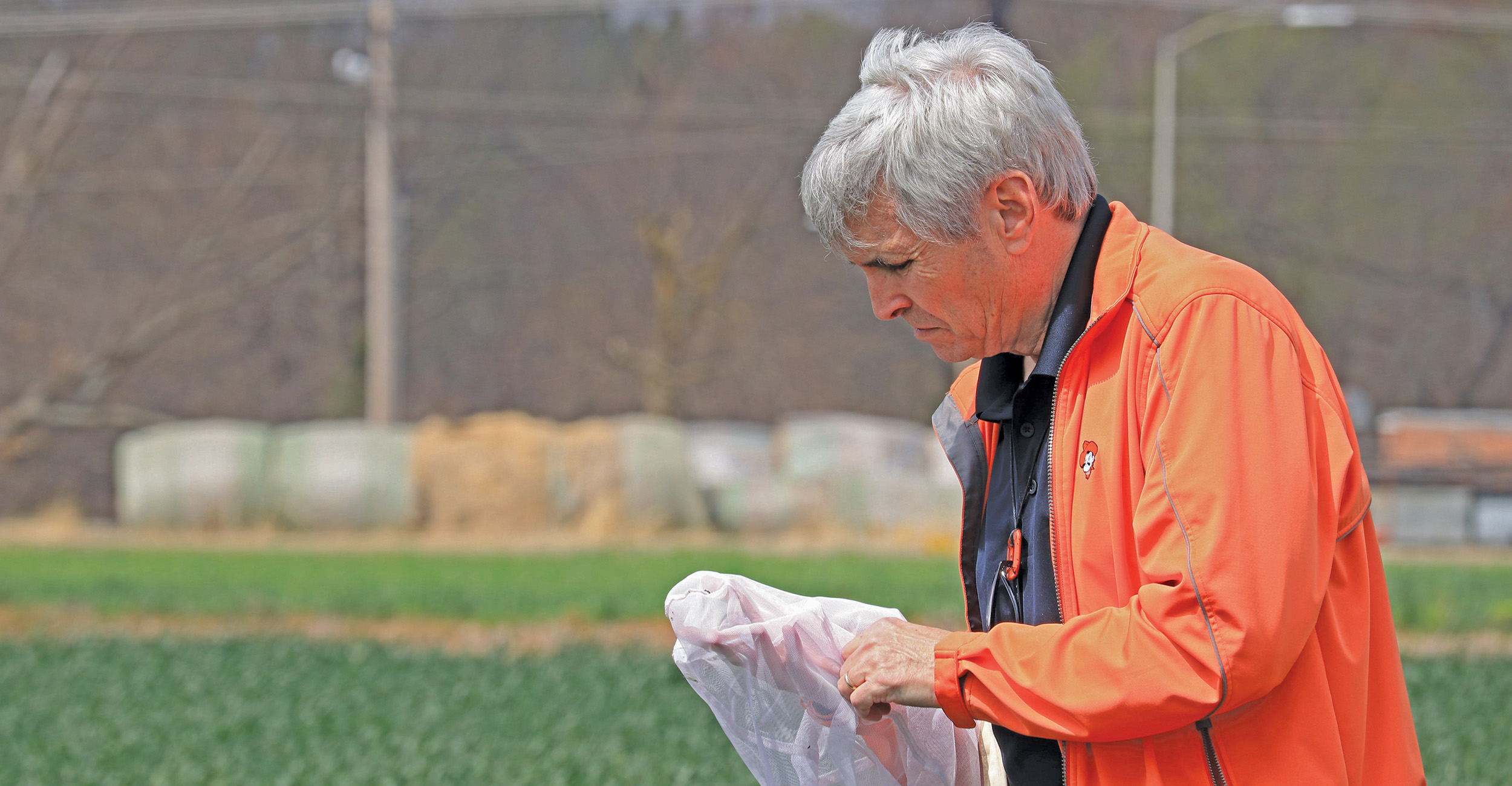
Conquering Oklahoma’s Pests
Friday, May 27, 2022
Media Contact: Jami Mattox | Agricultural Communications Services | 405-744-8061 | jami.mattox@okstate.edu
Among the plants hide insects, weeds and diseases. Farmers are destined to fight these problems, but according to Oklahoma State University Extension, they do not have to handle them alone. They can turn to an OSU program to spend less and spray less.
Kris Giles, Regents professor in entomology and plant pathology, said integrated pest management offers Oklahomans a helping hand in conquering pesky nuisances.
IPM OKLAHOMA! is an extensive strategy of controlling pests using different methods for various circumstances, Giles said.
“It’s a comprehensive approach to managing pests in all different types of situations — agriculture, horticulture, household, urban and schools — with the idea that it’s economically viable, it has some level of sustainability, it can persist for a long period of time, and it’s relatively safe in its approach,” Giles said.
IPM OKLAHOMA! strategies include multiple approaches to dealing with pests. Anything from sanitizing living areas to working with natural enemies or chemical pesticides can be implemented in IPM OKLAHOMA!, Giles said. IPM is an approach for long-term, sustainable and safe pest management practices, Giles added.
“Two of the bottom lines for me are always, ‘Is it saving a producer money?’ and ‘Is it benefiting the environment?’” said Tom Royer, entomology and plant pathology professor and coordinator for IPM OKLAHOMA! “The practices we advocate through IPM do both.”
IPM OKLAHOMA! is a free resource to any Oklahoman looking to tackle insects, pests or diseases for any circumstance in rural or urban settings, Royer said.
Royer said the current IPM program at OSU is deeply rooted in concepts discussed in a Hilgardia journal article written in 1959 by Vernon Stern, Ray Smith, Robert van den Bosch and Kenneth Hagen. The article, “The integration of chemical and biological control of the spotted alfalfa aphid: The integrated control concept,” is one of the early published writings promoting the idea of preventative pest management tactics.
“All of the concepts that we talk about and use today, like economic thresholds, treatment thresholds, and the ecological science behind IPM, were all developed with this journal article, and we have just run with it ever since,” Royer said.
IPM OKLAHOMA! gains most of its financial support from the U.S. Department of Agriculture through the National Institute of Food and Agriculture Crop Protection and Pest Management Program’s Extension Implementation Program.
“Today, it’s a competitive grant program, but originally it was not competitive,” Royer said. “It was just formula funding, where your program would get a specific amount of money each year.”
IPM OKLAHOMA! switched from formula funding to a competitive grant program in 2009. Royer said every three years he must write and submit a proposal to NIFA for program funding.
“It’s been continuously funded here since probably 1976,” Royer said.
As a program, IPM OKLAHOMA! is persistently funded because the need for strategic pest management is unabating, Royer added.
Charles Luper, entomology and plant pathology extension associate, said IPM OKLAHOMA! helped him take better care of his specialty crops, like peanuts.
“We used to spray our peanuts for leaf spot disease, and that was on a calendar basis every two weeks,” Luper said. “Now, with the Oklahoma Mesonet system — an IPM tool that accounts for weather data — we can base our spraying off of actual scientific data.”
Luper said the Mesonet system was created in 1994 by OSU and the University of Oklahoma. Oklahoma Mesonet is a network of environmental monitoring stations with each Oklahoma county having at least one Mesonet station.
Farmers and ranchers can utilize this free IPM tool for better agricultural practices, Luper added.
Kelly Seuhs, OSU Extension associate specialist in entomology and plant pathology, said IPM practices can be as simple as a spring harrowing.
“If there is alfalfa weevil egg deposition in the fall or winter, these eggs are located in plant stems,” Seuhs said. “Some growers incorporate a light harrowing before spring to dislodge the eggs from the stems.
“This strategy can prolong weevil activity well into the spring, possibly eliminating the need for multiple applications of pesticides."
IPM OKLAHOMA! is not meant to eliminate the use of insecticides, Seuhs said, but the program can help Oklahomans utilize non-chemical strategies for insect control.
“IPM is not a one-size-fits-all approach, but we do anything we can to cut down on unneeded sprays,” Seuhs said. “Anything we can implement to reduce costs and is economically viable and sustainable, we’re going to do.”
IPM OKLAHOMA! can be customized to a producer’s liking, Giles said, and it often alleviates some farm financial stress.
“The return on investment has been significant as far as unbiased information to producers that they get to make the choices based on data and information from Oklahoma,” he said.
Oklahomans have access not only to data and information but also to the instructors of the program.
“We have fact sheets and conduct face-to-face meetings,” Royer said. “If a person wants to call, I’m always willing to help.”
Oklahomans looking for more information about IPM OKLAHOMA! can visit Integrated Pest Management or email Royer.
Story By: Dalee Barrick | Cowboy Journal
